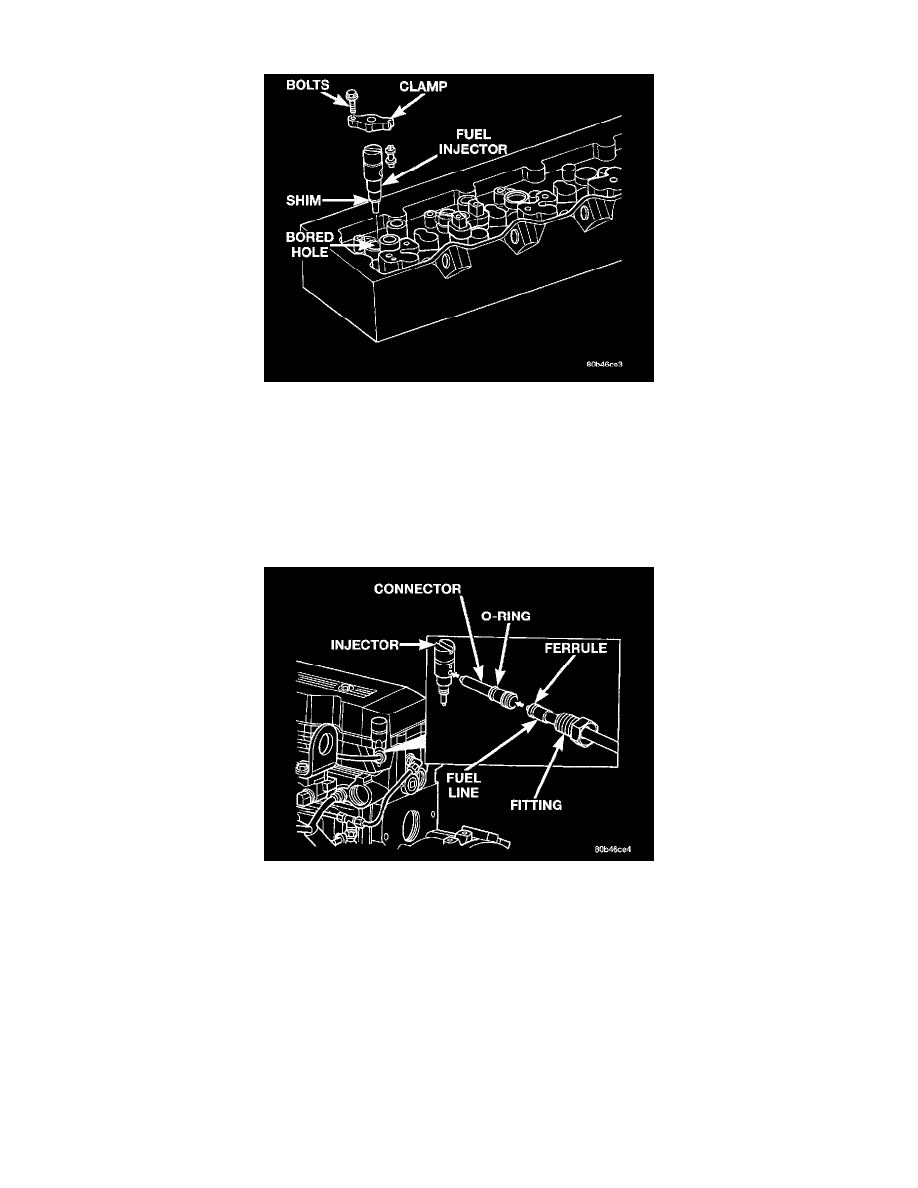RAM 3500 Truck 4WD L6-5.9L DSL Turbo VIN 6 (1998)

Fuel Injector: Description and Operation
Fuel Injector Location
Six individual, high-pressure fuel injectors are used. The injectors are vertically mounted into a bored hole in the top of the cylinder head. This bored
hole is located between the intake/exhaust valves.
High-pressure fuel is supplied from the injection pump, through a high-pressure fuel line, through a steel connector and into the fuel injector. When fuel
pressure rises to approximately 31,026 kPa (4,500 psi), the needle valve spring tension is overcome. The needle valve rises and fuel flows through the
spray holes in the nozzle tip into the combustion chamber. The pressure required to lift the needle valve is the nozzle opening pressure. This is
sometimes referred to as the "pop" pressure setting.
Fuel Injector Connections
Each fuel injector is connected to each high-pressure fuel line with a steel connector. This steel connector is positioned into the cylinder head and sealed
with an O-ring. The connectors are sealed to the high-pressure fuel lines with fittings. The ferrule on the end of the high-pressure fuel line pushes against
the steel connector when the fuel line fitting is torqued into the cylinder head. This torquing force provides a sealing pressure between both the fuel
line-to-connector and the fuel connector-to-fuel injector. The fitting torque is very critical. If the fitting is under torqued, the mating surfaces will not
seal and a high-pressure fuel leak will result. If the fitting is over torqued, the connector and injector Will deform and also cause a high-pressure fuel
leak. This leak will be inside the cylinder head and will not be visible. The result will be a possible fuel injector miss-fire and low power.
